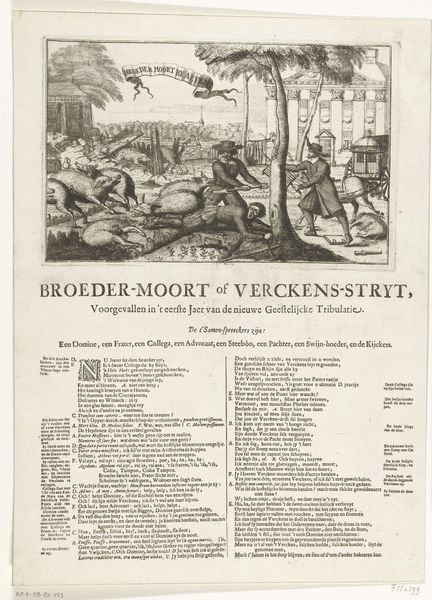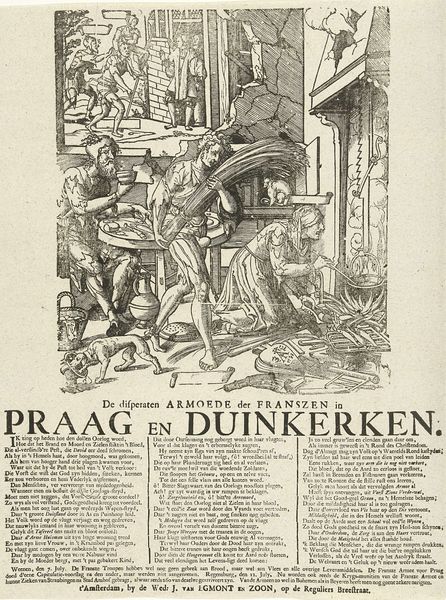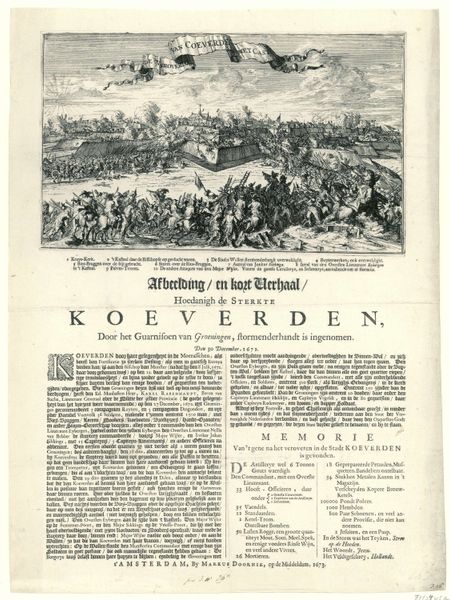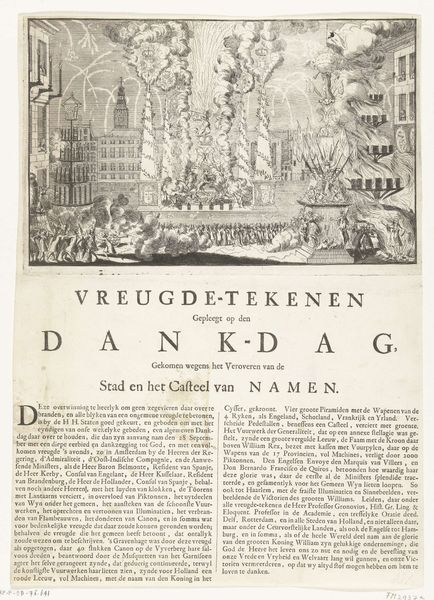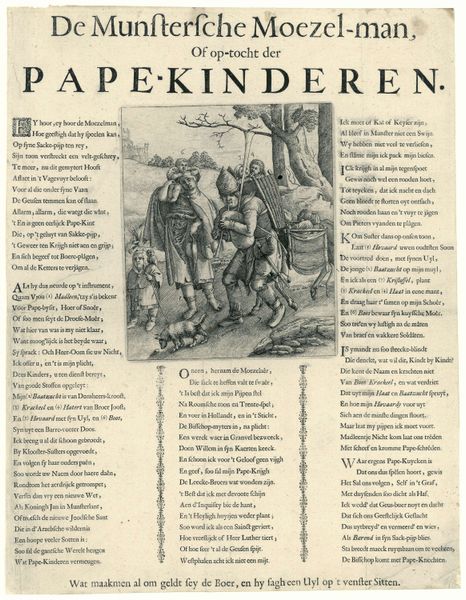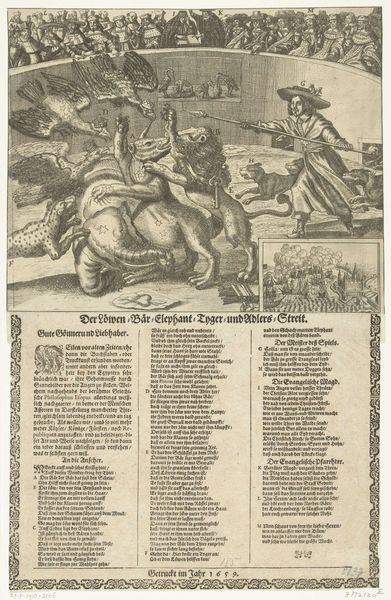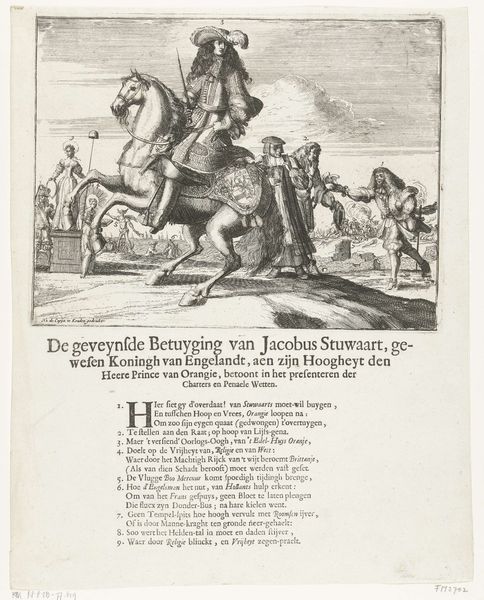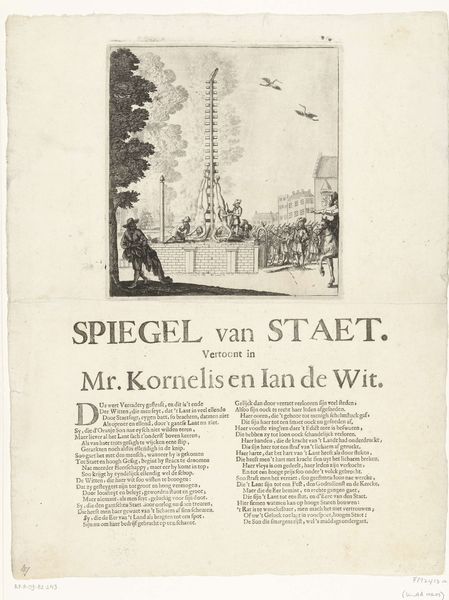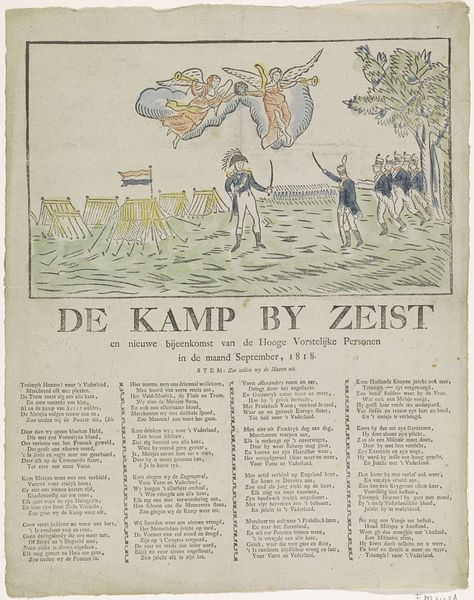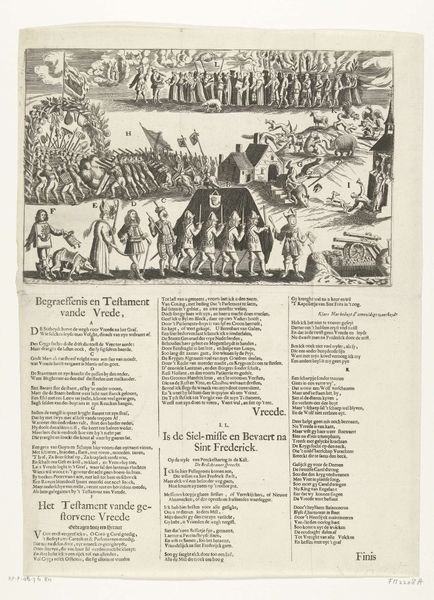
Spotprent op de benarde positie van de Nederlanden aan het begin van het jaar 1672 1672
0:00
0:00
anonymous
Rijksmuseum
print, engraving
#
baroque
# print
#
figuration
#
history-painting
#
engraving
Dimensions: height 374 mm, width 276 mm
Copyright: Rijks Museum: Open Domain
Curator: Take a look at this print from 1672, created anonymously and housed in the Rijksmuseum. The full title is “Spotprent op de benarde positie van de Nederlanden aan het begin van het jaar 1672,” which translates to “Satirical print on the difficult position of the Netherlands at the beginning of the year 1672." It’s an engraving that employs figuration and can be seen as a form of history painting, referencing a very specific political and economic moment. Editor: My initial reaction is one of chaos! It's dense, packed with figures, monstrous creatures, and frantic energy. The light and dark areas are so strong that they amplify the drama. A visual representation of turmoil, wouldn't you say? Curator: Exactly. The print depicts the Netherlands as a cow being squeezed for its resources by various European powers amidst the Franco-Dutch War. The cow symbolizes the Dutch Republic, while the figures surrounding it represent foreign powers attempting to exploit its wealth and lands. Editor: The symbolism is overt, but in an effective way. It's a potent visual metaphor for the exploitation of a nation. The foreign powers become monstrous figures leeching off of the resources while the common person suffers. Look at the desperation in those faces! It's not just about politics; it's about the impact on everyday lives. How does this fit into the larger visual culture of political critique in that era? Curator: Prints like these were immensely popular as propaganda tools. They were widely distributed, offering a visual narrative that could influence public opinion during a time of crisis. This print isn’t just documenting history, it’s shaping it by portraying the Dutch Republic as a victim of external aggression, and stirring up feelings of national pride and resentment. Editor: It feels intensely relevant. Aren’t we still grappling with similar power dynamics today? I can definitely recognize the desperation and exploitation portrayed here—just transposed to a different stage. Curator: Indeed, the print offers a crucial insight into how anxieties about national identity and economic stability were visualized and circulated during a pivotal point in Dutch history. Editor: So, while seemingly specific to the 17th century, this "satirical print" touches on timeless issues. Thanks to this piece, I will reconsider how the artwork has echoes in today’s dialogues on power.
Comments
No comments
Be the first to comment and join the conversation on the ultimate creative platform.
